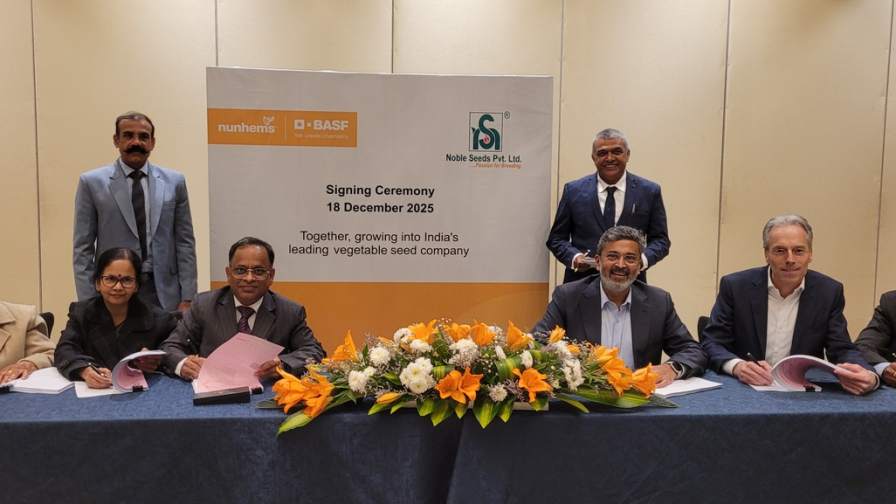Is Your Supply Chain Secure?
INVENTOR companies and the larger generic/off-patent companies outsource the manufacture of some AIs and intermediates, they have teams of experts making sure that the management of the supply chain is in place to secure the huge investment already made in R&D and registration development. A rigorous assessment and follow-up audits of toll manufacturers takes place involving the major areas highlighted in Table 1.
Typically the toll manufacturer will be supplied with intermediates to carry out the reaction(s) and the quality of such intermediates will be guaranteed.
For the purpose of this article, the term “marketing company” is used to define those companies that:
â– Register finished products in national and regional markets
â– Are not involved in discovery of new active ingredients (AIs)
â– Do not manufacture agrochemical AIs
â– Purchase AIs and/or finished formulated products
â– Sell finished formulated products to the distributor network.
Marketing companies invest considerable effort and resources into obtaining registrations and getting a product to market but tend to spend very little effort on supply chain management. Their main focus is on technical specification, documentation required for registration purposes (five batch analysis, field trial data, etc.) and delivery schedule for timely market entry once the registration has been achieved. A typical marketing company does not understand the process of manufacture of the AI and, as a result, is at great risk that the supply of AIs might be disrupted for a variety of reasons including:
â– Lack of access to a key raw material
â– Restrictive process patents
â– Lack of capability to test quality of product
â– Supplies of the AI and/or key intermediate being bought out by the inventor company and
â– Loss of manufacturing licenses for environmental reasons.
The following three examples demonstrate where supply chain security for marketing companies might be at risk.
1) Lack of access to key raw materials
The final step in the synthesis of the majority of the newer agrochemical AIs is relatively straightforward and involves the coupling of two complex intermediates. This usually requires basic equipment and utilizes a process that can be operated by most manufacturers. Often the more difficult part is the manufacture of the key intermediates that often require complex technologies and specialized equipment. It is at this stage that the marketing company has limited understanding, and as a result is exposed to supply chain problems.
This was not always the case as from an organic chemistry view point; older AIs involved simpler synthetic pathways and used intermediates that were common to a number of AIs and available from a number of suppliers (see triazine example in Diagram 1, p. 34).
Newer AIs that are soon to lose basic AI patent protection require more complex intermediates, some of which are unique to the manufacture of a specific AI. What would be the consequence if the supplier of a key intermediate lost its manufacturing licence due to environmental or health and safety legislation, or if the AI inventor company entered into a supply agreement to purchase the total capacity of the key intermediate?
Table 2 (p. 38) shows three AIs identified by Enigma Marketing to lose basic AI patent protection and require intermediates that have no other agrochemical usage. The marketing companies looking to enter these markets in the future need to ensure that a secure supply of these key intermediates is available.
2) Process patents
Process patents can form a key defense strategy once a product loses basic patent protection, especially when other defense strategies such as mixture patents are restricted. This applies to fipronil; BASF is in litigation with a number of companies (visit our website for daily news updates on fipronil patent infringement, process disputes and other key developments in crop production technologies).
A number of process patents to fipronil and its intermediates exist. Many, but not all, are assigned to BASF. Many relate to the final step in the complex synthetic pathway to fipronil. Consequently, purchasers of fipronil AI from a non-BASF source need to ensure that the manufacturing process does not infringe, among other things, on two key BASF patents (see Diagram 2):
EP0668269 – “Process for the sulfinylation of heterocyclic compounds,” which expires in February 2015. EP0668269 involves the direct sulfinylation of the key intermediate shown in Diagram 2.
EP1222173 – “Process for preparing 4-trifluoromethylsulfinylpyrazole derivative,” which expires in October 2019. EP1222173 is an improvement of the oxidation step and generic manufacturers must therefore use different oxidation conditions to those described by this patent.
Marketing companies rarely have the in-house expertise to assess whether or not their supplier is infringing on process patents and must rely on the manufacturer of the AI to confirm that it is operating a legal process. However, this would not absolve the marketing company from litigation and damages should it be proven that the AI has been manufactured by a patent-protected process. In Enigma’s AgriBase database, 35 Chinese companies claim to manufacture fipronil. The question is: Do they have the capability to understand the complex process patent situation and manufacture fipronil without infringing BASF’s patents?
3. Lack of capability to test quality of product
The chemistry and technology involved in the manufacture of mesotrione are relatively straightforward and involve some basic intermediates obtainable from a number of sources. However, in the EU the impurity 1-cyano-6-methylsulfonyl)-7-nitro-9H-xanthen-9-one, which is produced in the manufacture of mesotrione, is considered to be of toxicological concern and concentration levels. It must remain below 0.0002% (w/w) in the technical product. Syngenta has filed a number of process and purification patents for the manufacture of mesotrione including:
EP1979310 (A1) which is to a process for the crystallization of mesotrione.
EP1377544 (A2) which is to a purification of 2-nitro-4-methylsulphonybenzoic acid which is one of the key intermediates in the manufacture of mesotrione.
EP1786767 (A1) which is to a process for selectively controlling the crystallisation of thermodynamically stable Form (1) or kinetically stable Form (2) polymorphs of mesotrione.
EP1740534 (granted patent with expiry date of March 2025). Process for reducing the cyanide levels in mesotrione.
EP1682497 (A1) which is to a process for reducing the levels of undesirable impurities in mesotrione.
In Enigma’s AgriBase database, 17 Chinese companies claim to manufacture mesotrione. Again, the question is: Can they achieve the required specification for the European (and other) registration systems without infringing Syngenta’s patents?
Chinese manufacturers do offer two grades of mesotrione, one that does meet the above impurity level and one that doesn’t. A number of questions arise:
â– Why have two standards?
â– Can/do marketing companies check for this level of impurity?
â– Can/do registration authorities check for this level of impurity?
This is a key issue of Supply Chain Management which many marketing companies fail to adequately address.
Purchasers of AIs need to introduce more rigorous supply chain management systems with audit systems in place to pay particular attention to security of supply of intermediates and hence AIs and to ensure that the manufacturing process has not infringed process patents. AI suppliers need to have more transparent management and manufacturing systems which marketing companies can understand in order to underpin the investment they make in registrations and getting a generic to market.
All in all, a much closer relationship must develop between supplier and purchaser as considerable investment is made prior to market entry, which must be underpinned by a secure supply chain.





